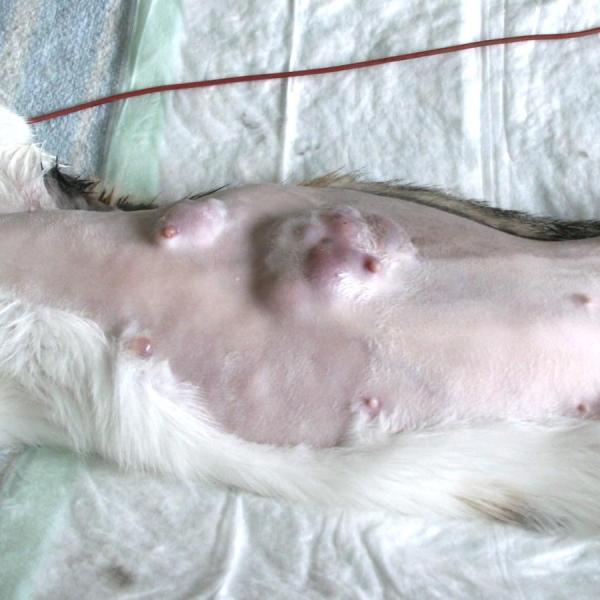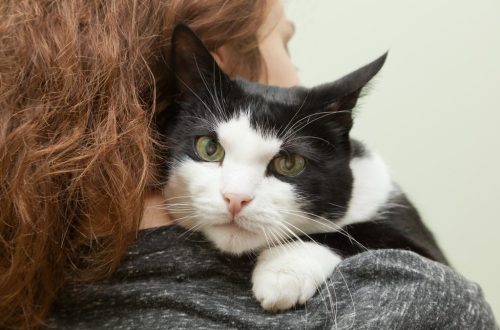
Breast tumor in a cat: symptoms, stages, prognosis
Breast cancer in cats is quite common. Such a tumor is dangerous with a high risk of metastasis, as well as similarity with other neoplasms. Cancer is often confused with them, and this slows down treatment. How to detect a disease in a cat in time and keep it healthy?
Breast cancer in cats can be benign or malignant. Benign, such as adenomas and cysts, are treated relatively easily and do not pose a mortal danger to the animal. But most often, breast cancer refers to a malignant neoplasm with a poor prognosis. For example, breast carcinoma in a cat develops very quickly and gives complications even in the early stages.
Contents
Causes of Breast Cancer in Cats
Reasons for development cat cancer there may be several:
- taking hormonal drugs to suppress sexual desire,
- malfunctions of the hormonal system,
- improper conditions for keeping a pet,
- inappropriate food,
- chronic stress,
- contacts with household chemicals.
In addition, there may be a genetic predisposition to the disease.
Symptoms and stages of the disease
When examining a cat, it is usually possible to distinguish a benign tumor from a malignant one. Benign neoplasms have a round or oval shape with clear boundaries. Malignant tumors look fuzzy, without obvious boundaries, with a chaotic arrangement of blood vessels. Some areas may bleed and even die. The disease develops in stages.
At the first stage, there are practically no symptoms, the disease can only be determined by small tubercles under the skin in the nipple area. At the same time, the cat behaves as usual, eats normally and is active.
In the second stage, the tubercles begin to grow rapidly and appear in neighboring tissues. But there are still no noticeable changes in the behavior of the pet.
The third stage of breast cancer causes pain in the cat. Tumors increase to 5 centimeters, the animal refuses to eat, becomes lethargic and gets tired quickly. A specific smell may come from the focus of the disease.
The last stage is the fourth. During this period, the tumors grow even more, they can open, the unpleasant odor increases. At the fourth stage, the doctors’ forecasts are disappointing, the animal can be saved, but its life can not be significantly extended. That is why it is important to detect the disease in time and start treatment at an early stage.
Treatment and forecasts of doctors
The main method of tumor treatment is surgery. After diagnosing the disease, the doctor performs a unilateral mastectomy – removal of the mammary glands. Usually, not only the affected glands are removed, but also the rest in a row to exclude the formation of new foci. If the veterinarian notices changes in the neighboring row of glands or in the lymph nodes, they are also removed.
In some cases, chemotherapy is given along with surgery. Drugs and dosages are prescribed individually for an individual animal, depending on the size of the tumor and the stage of the disease.
Preventive measures
The main measure for the prevention of mammary gland tumors in cats is timely sterilization. It must be carried out before the first estrus, while the kitten is not yet 6 months old. This measure reduces the risk of developing cancer by 90%. Cats are also susceptible to this disease, so their owners should carefully monitor the health of the animal.
Other preventive measures:
- refusal of drugs based on the hormone progesterone and other means to suppress sexual desire,
- proper nutrition,
- regular check-ups with a veterinarian.
If there are any changes in your pet’s behavior, it is important to consult a doctor immediately.
See also:
- What should I do if my pet is diagnosed with cancer?
- Subcutaneous lumps or bumps in cats: causes, treatment
- How to recognize and treat mastitis in a cat





